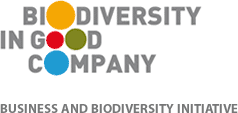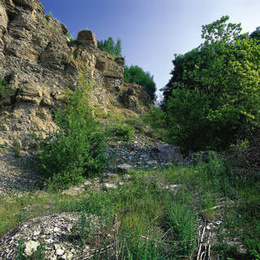Business and Biodiversity: HeidelbergCement

HeidelbergCement
Commitment

HeidelbergCement works in a sensitive environment. For this reason, at all of its site locations special attention is paid to protecting biological diversity.
Traditionally, HeidelbergCement has placed the highest priority on environmentally sound mining methods and subsequent measures for the renaturation and restoration of quarrying areas. Numerous mapping, renaturation, and maintenance projects over the last 20 years demonstrate the ecological value of the Group’s quarrying sites.
HeidelbergCement, in joining the 'Biodiversity in Good Company' Initiative and in order to practically implement the Leadership Declaration, created the new Group department Global Environmental Sustainability in 2008, which reports directly to the Managing Board. Within this department, a specialist directs activities across the Group in the area of biodiversity.
HeidelbergCement was the first European company in the building materials industry to implement a guideline to promote biological diversity at its quarrying sites. Its ten principles are geared towards promoting dialogue with all parties involved - such as environmental authorities, nature conservation organisations, and the general public - as well as increasing biological diversity during and after quarrying in order to protect the native landscape and nature. In addition, the guideline defines goals to promote biological diversity at the quarrying sites, which HeidelbergCement aims to achieve by 2020, using tried and tested renaturation concepts and management plans. Information about progress on concrete goals is provided regularly on the Group’s website and in the Sustainability Report.
The company also informs its suppliers and customers about its commitment and goals in the area of biodiversity, e.g. at events or via our customer magazine. Throughout the world, HeidelbergCement co-operates at a local level with nature conservation organisations and universities in order to develop its environmental and biodiversity management in a technical sense. It plays an active part in environmental education through lectures and publications, and a large number of its plants collaborate closely with schools.
Benefit
HeidelbergCement is active across Europe and coordinates its business ventures with authorities, public agencies, nature protection organisations and local citizens.
As a raw materials and aggregates company, HeidelbergCement is dependent on natural resources from quarries and gravel pits. These raw materials represent the beginning of the company’s supply chain. Pro-active discussion of the issues of biodiversity and nature protection helps to minimise the investment risk for a quarry. By additionally using scientific expertise and fostering company studies HeidelbergCement creates trust and acceptability. This is especially important in permit procedures for the extension of quarries or plants.
Modern permits are today granted in dialogue with authorities, public agencies, nature protection organisations and local citizens. Environmental impact assessments and plans for renaturation hereby form an important basis of decision-making. These will only find acceptance if HeidelbergCement is perceived as a trustworthy partner with excellent environmental management. That is why permit procedures - implemented quickly and efficiently and based on consensus - deliver a decisive contribution to the long term supply of raw materials.
We have developed biodiversity management plans for 110 European quarries located in areas of high biodiversity value. The plans define the measures that can help to protect species diversity within the quarry and its surroundings. Investment in such a plan is worth it: it minimises the risk of environmental damage and prevents possible production downtime.
Worldwide HeidelbergCement has made rehabilitation provisions of more than € 190 Mio. By means of modern rehabilitation and renaturation, the costs can be reduced significantly in some cases. The sowing of species-rich mixed forests, for example, instead of an afforestation of expensive monocultures, can save up to € 20.000 per hectare.
News from HeidelbergCement
-
HeidelbergCement |
HeidelbergCement: Supporting the Mono Transboundary Biosphere Reserve

Across the southernmost section of the border between Benin and Togo there is an area which provides habitats for a wide variety of animal species, some which are highly endangered. During recent decades this area has been under threat due to human impact. Since 2017, UNESCO has recognized this area as a Biosphere Reserve due to its rich biodiversity, including some critically endangered species, and role in providing important ecosystem service.
-
HeidelbergCement |
HeidelbergCement Sponsors Ecological Restoration conference
![[Translate to English:] Messestand von HeidelbergCement auf Konferenz](/fileadmin/_processed_/5/d/csm_HeidelbergCement_SER_2019_e673d3cf89.jpg)
The end of September saw over 800 delegates from 66 countries gather at the tip of the African continent for the 8th International conference of the Society for Ecological Restoration (SER). With representatives from academia, non-governmental organisations, local government agencies, business and the United Nations, the focus was very much on restoring land, water and community resilience, and laying the path towards the UN decade on ecosystem restoration, which starts in 2021. Building on a developing partnership with SER, HeidelbergCement was proud to sponsor the international conference for a second time.
-
HeidelbergCement |
BirdLife partnership: HeidelbergCement sponsors Spring Alive Campaign 2019

Since 2011, HeidelbergCement has been in Partnership with BirdLife International, one of the largest nature conservation organisations worldwide. Both partners strive to promote and raise awareness about the essential role that quarries can play to support biodiversity via the temporary or permanent nature of the different habitats they comprise. Through the Partnership, HeidelbergCement has offered to sponsor the 2019 campaign of the Spring Alive programme.
FactBox HeidelbergCement

Headquarters
Heidelberg, Germany
Major Products
Aggregates, cement and concrete
Global Turnover 2016
15.166 billion Euro
Global Employees
app. 60,000
Progress Report 'Biodiversity in Good Company' Leadership Declaration
Further information & good practice
Sustainability Commitments 2030 (2017)
The Quarry Life Award www.quarrylifeaward.com/
Sustainability Report 2016:
www.heidelbergcement.
com/en/sustainability-report
Best Practice Pastureland at the Gerhausen Quarry (PDF)
Best Practice Sustainable Land Management (PDF)
HeidelbergCement - Building on Sustainability:
Best Practice Górazdze (PDF)
Best Practice Schelklingen (PDF)
Best Practice Slite (PDF)
HeidelbergCement & BirdLife Projects (PDFs):
- Floodplain Project
- Pastureland Project
- Restoration Project
- Sand Martin Project
- Silt Lagoons Project
- Whooper Swans Project